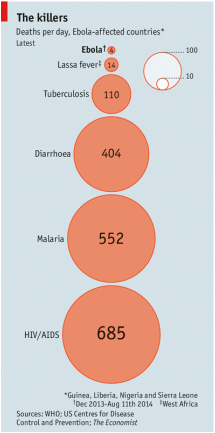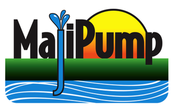
Jambo! We started out hoping to help others and found ourselves being the ones who received the most benefit. Someone famous probably said that or something similar. It certainly rings true for my experience working with the women smallholder farmers in Kenya.
In August 2013, my son Dan planned a trip for the two of us to do volunteer work in Kenya with the HIV+ community. He is a pre-med student and I am a product designer. I founded and run two companies and am an Associate Professor at the University of Illinois Urbana-Champaign. Two months prior to our trip, I learned that I was receiving a grant from the Bill and Melinda Gates Foundation to develop a solar powered irrigation pump specifically for women smallholder farmers in Africa. http://www.grandchallenges.org/explorations/Pages/grantsawarded.aspx?Round=all&Phase=all&ProjectID=1195
With the trip already planned, I thought I’d need to change focus away from the volunteer activities in order to find opportunities to place the pumps that had yet to be designed. What could HIV and moving water uphill possibly have in common??? As you have probably already guessed, they are so intricately linked that the minute I met Mary Wanderi, the founder of Living Positive Kenya, I knew my pumps had found a home.
There are two vital tools in the fight against AIDS: proper nutrition, and income to pay for medicine. Medicine costs between 5-10,000 shillings a month ($65- $115 USD). The Majipump supports both nutritional health and income generation.
Many of the AIDS affected communities we are working with are operated by widows and have a large number of orphaned children to support. They have been provided greenhouses (see the link on “Why greenhouses”) that require 1,000 – 2,000 liters of water per day. Supplying this demand for water goes well beyond the traditional need to fetch water for cleaning, cooking, and drinking. Basically, the women are worked to exhaustion and often times injured in the process. Imagine…you drop a five gallon bucket down a 30 foot hole, you then manually lift 40 pounds of water to the surface. Transfer the water to another jug and walk a football field’s length with 40 pounds of water balanced on your head. Then carry the water up a rickety ladder to pour into a tank that will gravity feed the greenhouse. Repeat 6 hours a day, Everyday.
Working closely with the women farmers, our team of students, anthropologists, and engineers learned more in five weeks about the specific challenges and user needs than we had in the previous six months corresponding by e-mail and skype with those closely involved. We now have an updated Majipump system design that is lightweight, portable, low cost, with a max energy use of 72 watts. I will be returning in September to update the installation sites with the new system. In addition, the construction of fishponds was not part of the original plan for the project. Our charge was to build pumps and set them in place. But once we learned of the tremendous economic and nutritional advantages and how our pumps can be used in this application, we moved forward with these projects. Based on user feedback, we are now developing a fishpond aerator and bio-filter that uses the same pump we use for irrigation.
Our ultimate goal is to establish for our partners a sustainable business within Kenya that is comprised of the essential manufacturing, supply chain, assembly, warehousing, distribution, sales and marketing operations for the majipumps.
I owe a great deal of gratitude to our ultimate customers, the beautiful people of Kenya. They took us into their homes, fed us staple foods, and showed us love and support at the times we needed it. The team I was so privileged to work with that never quit in spite of illness, long days, and rooting for Argentina in the World Cup. The financial support of the Bill and Melinda Gates Foundation, in particular, the Grand Challenges Exploration Agriculture Team, and Professor Andrew Singer, Director of the Technology Entrepreneur Center University of Illinois Urbana-Champaign.
Kindly,
Brian Lilly, PhD
Associate Professor, Technology Entrepreneur Center
College of Engineering
University of Illinois Urbana-Champaign
In August 2013, my son Dan planned a trip for the two of us to do volunteer work in Kenya with the HIV+ community. He is a pre-med student and I am a product designer. I founded and run two companies and am an Associate Professor at the University of Illinois Urbana-Champaign. Two months prior to our trip, I learned that I was receiving a grant from the Bill and Melinda Gates Foundation to develop a solar powered irrigation pump specifically for women smallholder farmers in Africa. http://www.grandchallenges.org/explorations/Pages/grantsawarded.aspx?Round=all&Phase=all&ProjectID=1195
With the trip already planned, I thought I’d need to change focus away from the volunteer activities in order to find opportunities to place the pumps that had yet to be designed. What could HIV and moving water uphill possibly have in common??? As you have probably already guessed, they are so intricately linked that the minute I met Mary Wanderi, the founder of Living Positive Kenya, I knew my pumps had found a home.
There are two vital tools in the fight against AIDS: proper nutrition, and income to pay for medicine. Medicine costs between 5-10,000 shillings a month ($65- $115 USD). The Majipump supports both nutritional health and income generation.
Many of the AIDS affected communities we are working with are operated by widows and have a large number of orphaned children to support. They have been provided greenhouses (see the link on “Why greenhouses”) that require 1,000 – 2,000 liters of water per day. Supplying this demand for water goes well beyond the traditional need to fetch water for cleaning, cooking, and drinking. Basically, the women are worked to exhaustion and often times injured in the process. Imagine…you drop a five gallon bucket down a 30 foot hole, you then manually lift 40 pounds of water to the surface. Transfer the water to another jug and walk a football field’s length with 40 pounds of water balanced on your head. Then carry the water up a rickety ladder to pour into a tank that will gravity feed the greenhouse. Repeat 6 hours a day, Everyday.
Working closely with the women farmers, our team of students, anthropologists, and engineers learned more in five weeks about the specific challenges and user needs than we had in the previous six months corresponding by e-mail and skype with those closely involved. We now have an updated Majipump system design that is lightweight, portable, low cost, with a max energy use of 72 watts. I will be returning in September to update the installation sites with the new system. In addition, the construction of fishponds was not part of the original plan for the project. Our charge was to build pumps and set them in place. But once we learned of the tremendous economic and nutritional advantages and how our pumps can be used in this application, we moved forward with these projects. Based on user feedback, we are now developing a fishpond aerator and bio-filter that uses the same pump we use for irrigation.
Our ultimate goal is to establish for our partners a sustainable business within Kenya that is comprised of the essential manufacturing, supply chain, assembly, warehousing, distribution, sales and marketing operations for the majipumps.
I owe a great deal of gratitude to our ultimate customers, the beautiful people of Kenya. They took us into their homes, fed us staple foods, and showed us love and support at the times we needed it. The team I was so privileged to work with that never quit in spite of illness, long days, and rooting for Argentina in the World Cup. The financial support of the Bill and Melinda Gates Foundation, in particular, the Grand Challenges Exploration Agriculture Team, and Professor Andrew Singer, Director of the Technology Entrepreneur Center University of Illinois Urbana-Champaign.
Kindly,
Brian Lilly, PhD
Associate Professor, Technology Entrepreneur Center
College of Engineering
University of Illinois Urbana-Champaign
